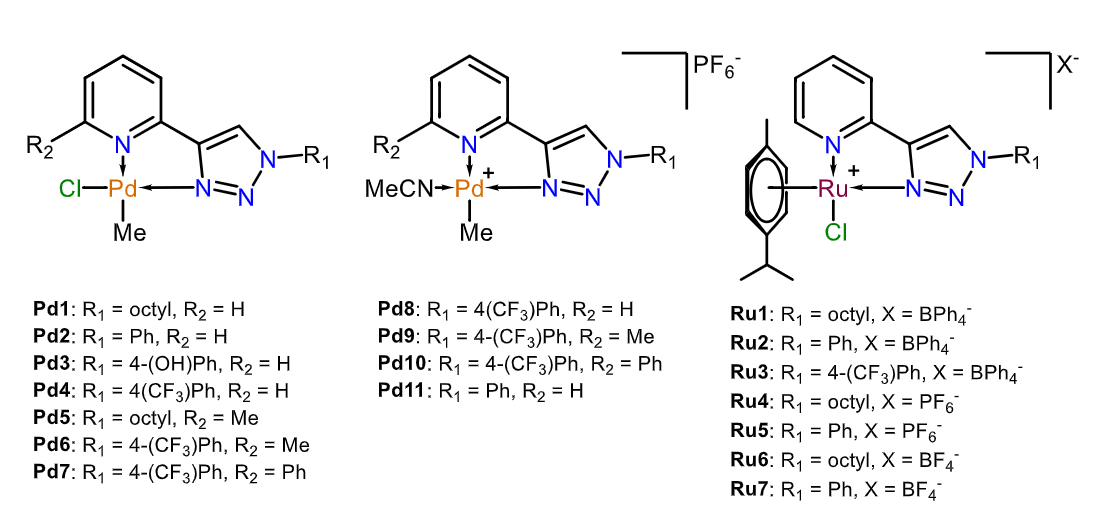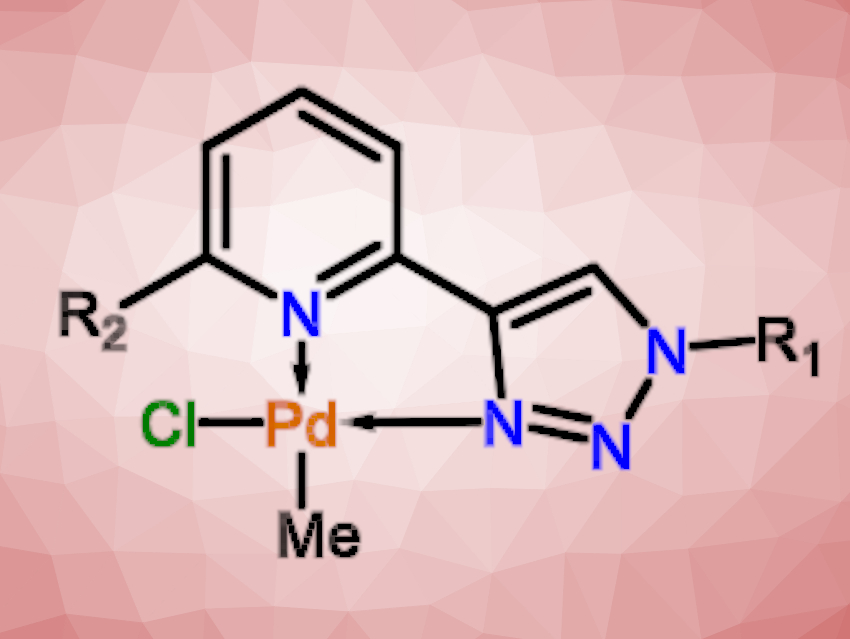Infections associated with antimicrobial resistance pose an important health threat. This problem is made worse by the stagnation of the antibiotic development pipeline and antibiotic overuse. The Community for Open Antimicrobial Drug Discovery (CO-ADD) is a crowd-sourced project that screens molecules submitted by chemists around the globe to find new antimicrobials. During this campaign, it has been found that metallodrugs might be a promising source of new antimicrobials.
Annick van Niekerk, University of Stellenbosch, South Africa, Angelo Frei, University of Bern, Switzerland, and colleagues have submitted 18 Pd(II) and Ru(II) pyridyl-1,2,3-triazolyl complexes (pictured below), which were originally developed as catalysts, to CO-ADD for antimicrobial screening. The 1,2,3-triazole ligands were prepared through conventional or microwave-assisted copper-catalyzed alkyne-azide cycloaddition (CuAAC) reactions, i.e., via click chemistry.
The neutral 1,2,3-triazolyl-pyridinato palladium(II)methyl chloride complexes Pd1–Pd7 were obtained by reacting the ligands with the Pd precursor [(COD]PdMeCl (COD = cyclooctadiene). The cationic Pd(II)-complexes Pd8–Pd11 were prepared by reacting the corresponding neutral complex with AgPF6 in the presence of acetonitrile. The Ru(II)-complexes Ru1–Ru7 were obtained by reacting the ligands with [RuCl2(p-cymene)]2, followed by the addition of the desired counterion salt.

The screened Ru(II) complexes proved to be inactive, but the Pd(II)-pyta catalysts (pyta = (2-pyridyl-1,2,3-triazole) showed potent antifungal activity. Most promising was the complex Pd1, which improved on the control compound Fluconazole and displayed potent activity against Candida glabrata, which is considered to be the most antifungal-resistant strain in the extended fungal panel. In addition, the Pd(II) complexes were found to be non-toxic in both in-vitro and in-vivo studies using G. mellonella larvae. These results demonstrate the potential of Pd(II)-pyta complexes as new antifungal agents.
- The antimicrobial properties of Pd(II)‐ and Ru(II)‐pyta complexes,
Annick van Niekerk, M. Cassiem Joseph, Angela Kavanagh, Hue Dinh, Andrew J. Swarts, Selwyn F. Mapolie, Johannes Zuegg, Amy K. Cain, Alysha G. Elliott, Mark A. T. Blaskovich, Angelo Frei,
ChemBioChem 2023.
https://doi.org/10.1002/cbic.202300247




